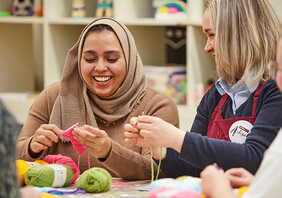How to Pick the Best Sewing Machine for Your Crafting Needs
Choosing a sewing machine is much like selecting a creative partner. It’s not just about getting stitches right—it’s about finding a machine that complements your style, projects, and ambitions.
Whether you’re a seasoned tailor or a hobbyist delving into DIY, the right machine can make all the difference.
Let’s explore what makes a sewing machine truly stand out.
You will need
How to Pick the Best Sewing Machine for Your Crafting Needs
The first major decision when selecting a sewing machine is choosing between mechanical and computerised models. Each has its merits, depending on your needs and comfort level.
Mechanical Sewing Machines: These machines operate with manual controls, meaning you’ll adjust the stitch length, width, and tension using dials and levers. They’re straightforward, durable, and ideal for beginners or those who prefer simplicity. Mechanical machines also tend to be more affordable and easier to maintain.
Computerised Sewing Machines: For those who enjoy versatility and precision, computerised models are the way to go. These machines offer automatic settings, a variety of stitch patterns (sometimes hundreds!), and programmable features. They’re perfect for complex projects, quilting, and embroidery. While they come at a higher price point, the convenience and accuracy often justify the investment.

Not all sewing machines are created equal, and the right features can transform your sewing experience:
Stitch Options: The number and variety of stitches can range from a basic straight stitch to decorative and stretch stitches. If your projects include quilting or garment-making, look for machines with zigzag, buttonhole, and stretch stitches.
Automatic Needle Threader: A small but mighty feature, the automatic needle threader saves time and frustration, especially if you work with fine fabrics or have frequent thread changes.
Drop-in Bobbin: A top-loading, drop-in bobbin system is easier to manage and monitor compared to front-loading systems, reducing the risk of jams.
Adjustable Speed Control: Whether you’re a beginner needing a slower pace or an experienced sewist wanting to power through seams, adjustable speed control allows you to work comfortably.
Free Arm: The free arm, a detachable section of the sewing machine base, makes it easier to sew cylindrical items like sleeves, cuffs, and trouser legs.
Automatic Buttonholes: If you regularly sew garments, automatic buttonhole functions simplify the process, producing perfect buttonholes in one step.

For those looking to expand their skills or tackle more specialised projects, these machines offer focused functionality:
Overlock (Serger) Machines: Overlock machines trim and finish seams in one step, creating professional, clean edges. They’re essential for stretchy fabrics like knits and for anyone who values a polished, professional finish.
Embroidery Machines: These machines are designed for intricate embroidery work, with built-in designs or the option to upload custom patterns. They’re ideal for personalising garments, home décor, and gifts.
Quilting Machines: Quilting machines often have a larger throat space to accommodate bulky quilts and allow for free-motion quilting, giving you the freedom to create intricate patterns.

When shopping for a sewing machine, brand reputation matters. Some well-known names in the sewing world include:
Singer: Known for its long history and reliability, Singer offers a range of machines for beginners and professionals alike.
Brother: Brother machines are user-friendly, versatile, and often come packed with features at competitive prices.
Janome: Praised for durability and innovation, Janone Machines are favourites among quilters and serious sewists.
Bernina: A premium brand, Bernina is known for precision, quality, and high-end features, often catering to advanced users.

A well-maintained sewing machine can last for decades. Here’s how to keep yours in top shape:
1. Clean Regularly: Remove lint and dust after each use, especially around the bobbin case and feed dogs.
2. Oil as Needed: Some machines require oiling to keep the internal components running smoothly. Check your manual for instructions.
3. Change Needles Often: A dull or bent needle can damage your fabric and machine. Replace it regularly to ensure clean stitches.
4. Get Professional Servicing: Periodic maintenance by a professional technician can keep your machine in peak condition and prevent costly repairs.

The best sewing machine is the one that meets your unique needs and inspires creativity. Whether you’re crafting quilts, tailoring garments, or adding decorative touches to home décor, having the right machine by your side can elevate your projects.
Take time to explore your options, test different models if possible, and invest in a machine that feels intuitive and reliable. After all, a sewing machine isn’t just a tool—it’s a creative partner that helps bring your ideas to life, stitch by stitch.












